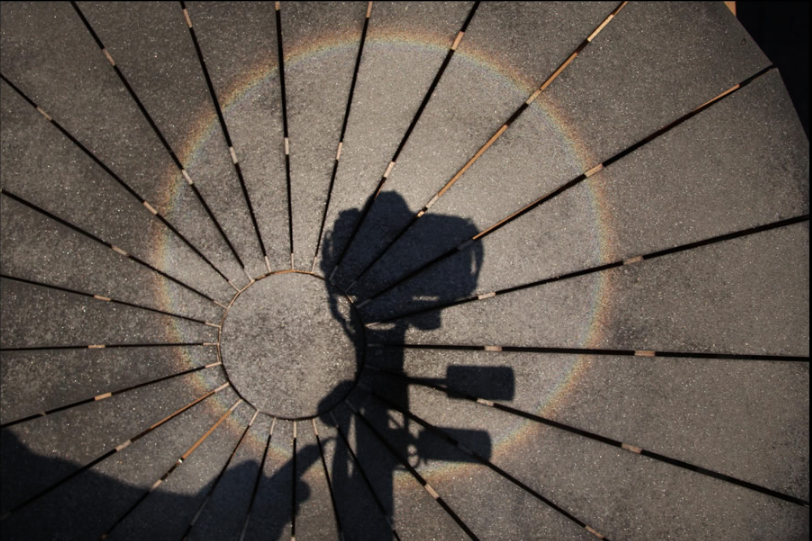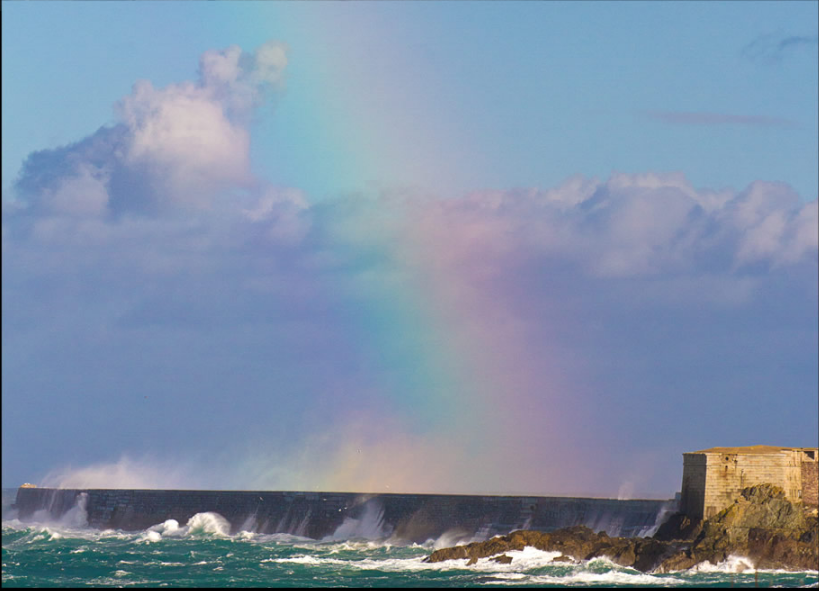Seawater Bow - OPOD
Seawater Bow: A Spectacular Optical Phenomenon
When we think of rainbows, we often associate them with rain showers. However, there is another type of bow that is formed by the spray of saltwater in stormy seas. These captivating optical phenomena are known as seawater bows. Unlike their rain-formed counterparts, seawater bows exhibit subtle differences in their appearance and formation.
To understand how a seawater bow is created, we need to consider the properties of the medium through which light passes. In this case, it is the transparent and near-spherical droplets of seawater spray. When sunlight enters and exits these droplets, the rays refract twice, resulting in the formation of a bow. The refractions are wavelength-dependent, giving rise to the vibrant colors that characterize bows.
The size of a bow is influenced by the material of the droplets or spheres involved. For instance, a water droplet creates a bow with a radius of 42 degrees. On the other hand, a glass sphere refracts light more strongly, causing the bow to shrink to half that size. Interestingly, a diamond sphere refracts light so intensely that it cannot produce a bow at all.
In the case of seawater, the presence of salt slightly increases its refractive index. As a result, seawater bows are slightly smaller, with a radius approximately 0.8 degrees less than that of rainbows. This difference becomes evident when comparing images of both types of bows side by side.
Photographs captured by Sandy Robertson showcase the beauty of seawater bows. In one image, Robertson captures a stunning scene where sea spray bows and "Waterfall Sea" mirages coexist within the frame. The interplay between light and water creates a mesmerizing display of colors and atmospheric optics.
To further explore the concept of bow formation, artist Charles Monkhouse experimented with glass spheres. By affixing glass beads onto boards and illuminating them with a distant spotlight, he was able to create a bow with a radius of 21 degrees. This glass sphere bow is only half the size of a typical rainbow, demonstrating the impact of sphere material on bow size.
Seawater bows are not limited to a single occurrence. Sandy Robertson's photographs reveal multiple instances of these enchanting optical phenomena over the Alderney breakwater. The sea spray bows, distinguished by their smaller size, can be seen alongside raindrop bows, forming a captivating juxtaposition.
In conclusion, seawater bows offer a unique and captivating twist on the traditional rainbow. Formed by the spray of saltwater in stormy seas, these bows exhibit subtle differences in size compared to rainbows. Through the interplay of sunlight and transparent droplets, the mesmerizing colors of seawater bows come to life. Sandy Robertson's photographs beautifully capture the ethereal nature of these optical phenomena, showcasing their allure against the backdrop of the Alderney breakwater.

Seawater Bow
No rain made this unusual and spectacular bow. It was formed entirely by salt water spray cast up from a very stormy sea by high winds. Seawater bows are subtly different from those formed by rain.
Imaged by Sandy Robertson (parked in a safe spot!) on Alderney, Channel Islands. The high breakwater in the distance is where he captured his equally spectacular "Waterfall Sea" mirages.
Image ©Sandy Robertson, shown with permission
 Sea spray and raindrop bows compared. This photograph taken in the Pacific Ocean by J Dijkema shows both.
Sea spray and raindrop bows compared. This photograph taken in the Pacific Ocean by J Dijkema shows both.
The lower sea spray bow is some 0.8 degrees smaller in radius than the upper rain bow.

To form a bow we need something transparent and near spherical - plus some sunlight.
The sun's rays refract twice as they enter and leave the sphere. The refractions are wavelength dependent and thus make the bow's colours.
The refractions also depend on the sphere (or drop) material. A water drop gives a bow of radius 42 degrees. A glass sphere refracts more strongly and the bow shrinks to to half that size. A diamond sphere refracts so strongly that it cannot form a bow.
The salt in seawater increases its refraction slightly and sea spray bows are slightly smaller by about 0.8 degrees radius than rainbows. The famous picture at right shows the difference. The lower sea spray bow is noticeably smaller than the rainbow above it.

A 21 degree radius bow (half that of a rainbow) made by glass spheres.
Artist Charles Monkhouse glued glass beads onto boards and illuminated them with a distant powerful spotlight.

Another day, another sea spray bow captured by Sandy Robertson over the Alderney breakwater.
The small coloured fragment just above the breakwater is the sea spray bow. To its right is a bow from raindrops.

Note: this article has been automatically converted from the old site and may not appear as intended. You can find the original article here.
Reference Atmospheric Optics
If you use any of the definitions, information, or data presented on Atmospheric Optics, please copy the link or reference below to properly credit us as the reference source. Thank you!
-
<a href="https://atoptics.co.uk/blog/seawater-bow-opod/">Seawater Bow - OPOD</a>
-
"Seawater Bow - OPOD". Atmospheric Optics. Accessed on November 26, 2024. https://atoptics.co.uk/blog/seawater-bow-opod/.
-
"Seawater Bow - OPOD". Atmospheric Optics, https://atoptics.co.uk/blog/seawater-bow-opod/. Accessed 26 November, 2024
-
Seawater Bow - OPOD. Atmospheric Optics. Retrieved from https://atoptics.co.uk/blog/seawater-bow-opod/.